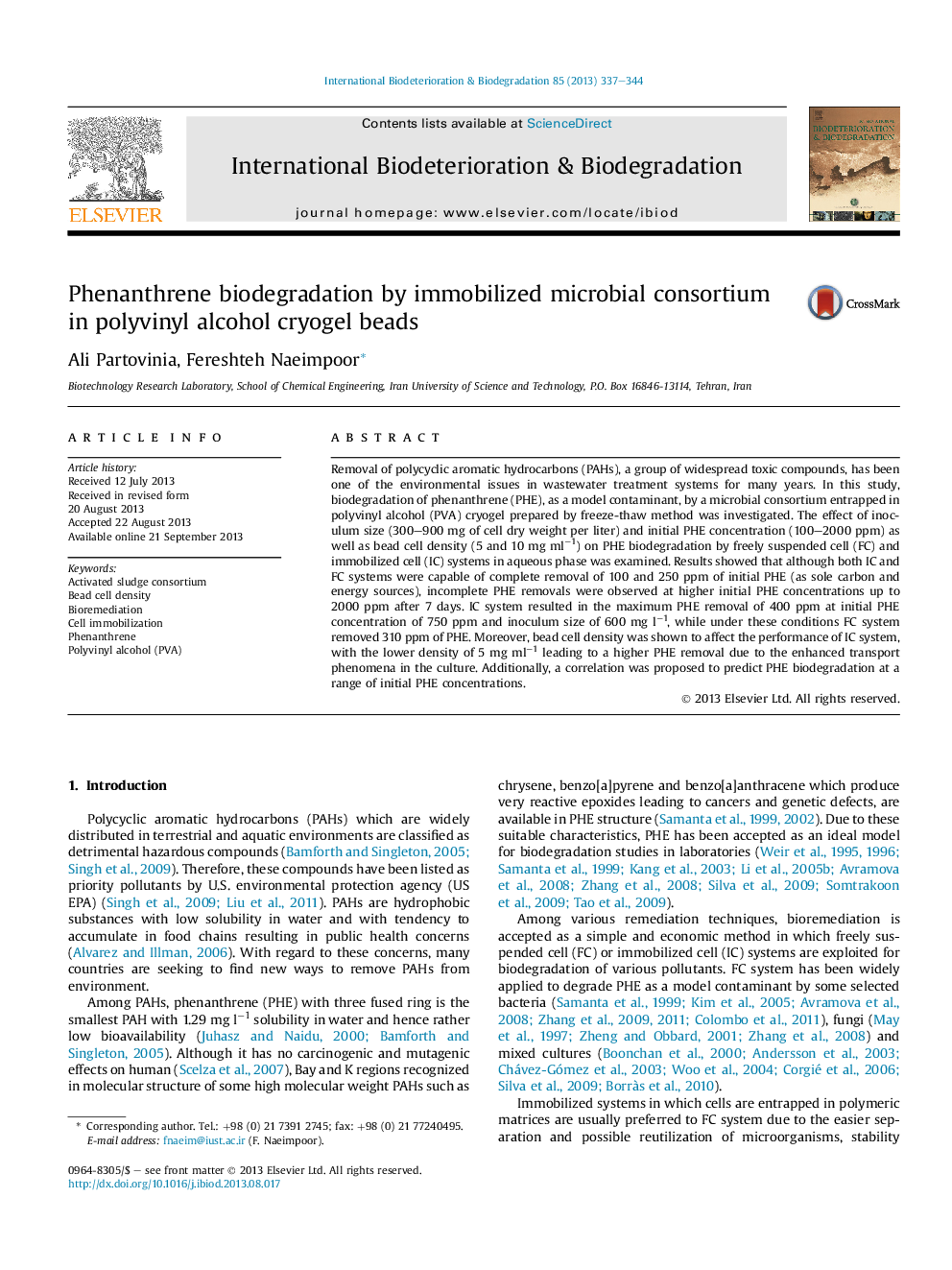| Article ID | Journal | Published Year | Pages | File Type |
|---|---|---|---|---|
| 6289320 | International Biodeterioration & Biodegradation | 2013 | 8 Pages |
Abstract
Removal of polycyclic aromatic hydrocarbons (PAHs), a group of widespread toxic compounds, has been one of the environmental issues in wastewater treatment systems for many years. In this study, biodegradation of phenanthrene (PHE), as a model contaminant, by a microbial consortium entrapped in polyvinyl alcohol (PVA) cryogel prepared by freeze-thaw method was investigated. The effect of inoculum size (300-900 mg of cell dry weight per liter) and initial PHE concentration (100-2000 ppm) as well as bead cell density (5 and 10 mg mlâ1) on PHE biodegradation by freely suspended cell (FC) and immobilized cell (IC) systems in aqueous phase was examined. Results showed that although both IC and FC systems were capable of complete removal of 100 and 250 ppm of initial PHE (as sole carbon and energy sources), incomplete PHE removals were observed at higher initial PHE concentrations up to 2000 ppm after 7 days. IC system resulted in the maximum PHE removal of 400 ppm at initial PHE concentration of 750 ppm and inoculum size of 600 mg lâ1, while under these conditions FC system removed 310 ppm of PHE. Moreover, bead cell density was shown to affect the performance of IC system, with the lower density of 5 mg mlâ1 leading to a higher PHE removal due to the enhanced transport phenomena in the culture. Additionally, a correlation was proposed to predict PHE biodegradation at a range of initial PHE concentrations.
Related Topics
Life Sciences
Environmental Science
Environmental Science (General)
Authors
Ali Partovinia, Fereshteh Naeimpoor,
